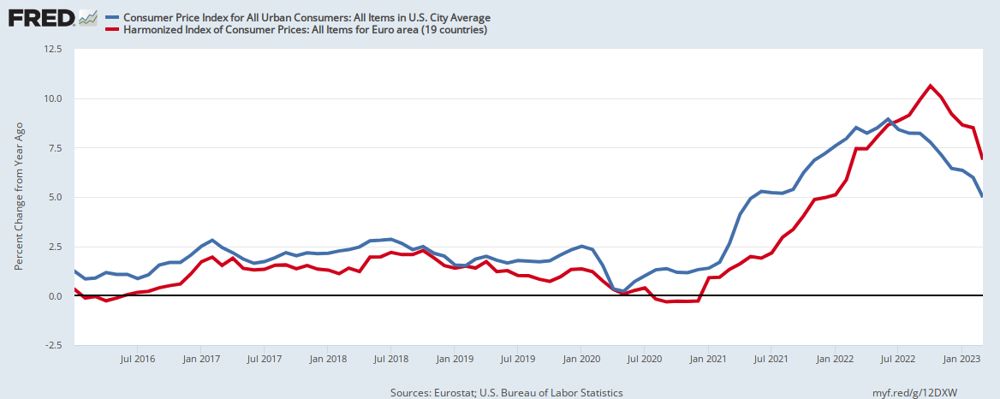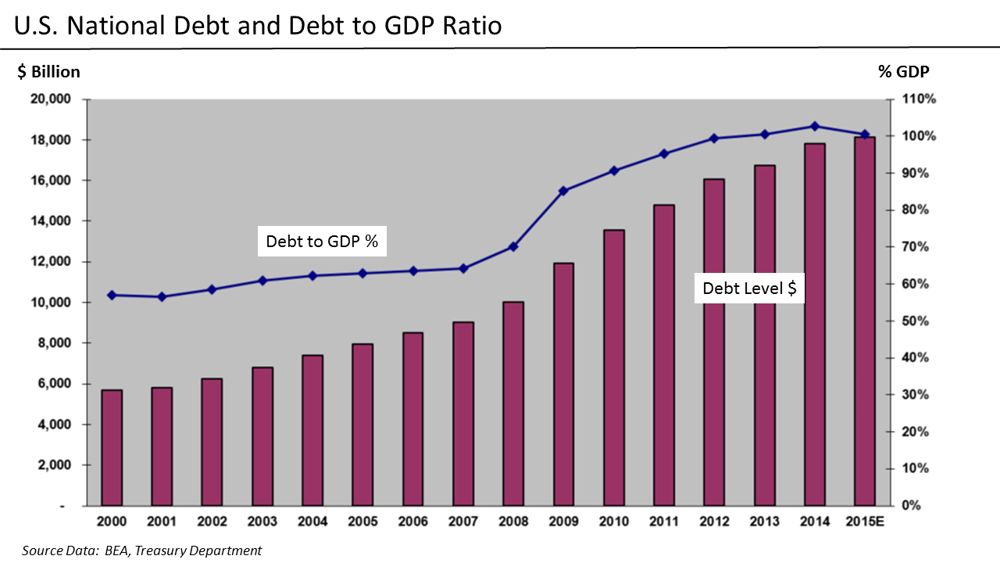“I Am Alarmed by U.S. Budget Policy”: Buffett on Inflation, Debt, and Bitcoin
Current Macroeconomic Situation in the United States
 Inflation in the U.S. began to decline sharply following a significant rise in 2021-2022, reaching 9.1% in 2022, and falling to approximately 2.9% by the end of 2024. However, many investors are concerned that fiscal policy could reignite price increases. In this context, Buffett emphasizes: “The government’s tendency is to devalue its currency over time” and reminds us that “if someone has the power to print money, they will do so.” In other words, the availability of quantitative easing tools incentivizes authorities to increase the money supply, which has historically led to the devaluation of fiat currencies and a decline in purchasing power.
Inflation in the U.S. began to decline sharply following a significant rise in 2021-2022, reaching 9.1% in 2022, and falling to approximately 2.9% by the end of 2024. However, many investors are concerned that fiscal policy could reignite price increases. In this context, Buffett emphasizes: “The government’s tendency is to devalue its currency over time” and reminds us that “if someone has the power to print money, they will do so.” In other words, the availability of quantitative easing tools incentivizes authorities to increase the money supply, which has historically led to the devaluation of fiat currencies and a decline in purchasing power.
 The U.S. budget deficit has reached unprecedented levels, with annual shortfalls in the federal budget measured in trillions of dollars. For instance, the Fiscal Year 2024 deficit was approximately $1.83 trillion, while in 2020, it surpassed $3.1 trillion due to emergency pandemic spending. According to the Treasury Department, total U.S. national debt exceeded $36.2 trillion by the end of 2024. This level of debt is nearly equal to the country's annual GDP, and its growth has accelerated significantly over the past two decades. Such figures alarm Buffett: “At this point, we are dealing with a budget deficit that cannot be sustained for an extended period.” High deficits and debt lead to additional borrowing costs and intensify pressure on fiscal policy, creating uncertainty for the economy and markets.
The U.S. budget deficit has reached unprecedented levels, with annual shortfalls in the federal budget measured in trillions of dollars. For instance, the Fiscal Year 2024 deficit was approximately $1.83 trillion, while in 2020, it surpassed $3.1 trillion due to emergency pandemic spending. According to the Treasury Department, total U.S. national debt exceeded $36.2 trillion by the end of 2024. This level of debt is nearly equal to the country's annual GDP, and its growth has accelerated significantly over the past two decades. Such figures alarm Buffett: “At this point, we are dealing with a budget deficit that cannot be sustained for an extended period.” High deficits and debt lead to additional borrowing costs and intensify pressure on fiscal policy, creating uncertainty for the economy and markets.
Fiat Currencies vs. Bitcoin
In contrast to fiat money, which can be printed without limits, the issuance of Bitcoin is programmatically capped at 21 million coins. This rigid supply and the mechanism of regular “halving” (which reduces miners' rewards) are designed to make BTC a deflationary asset. Many analysts and investors view this structure as a potential hedge against inflation and devaluation: “Bitcoin is often referred to as a safeguard against inflation because it will never exceed the 21 million coins available.” As the issuance limit approaches, the rate at which BTC is mined decreases, causing its supply to grow ever more slowly – a fundamental difference from the money printing policies of central banks, which can be “turned on” at will by authorities. This supports the perception of cryptocurrency as “digital gold” and an alternative to fiat currencies.
Fundamental and Technical Analysis of Bitcoin
 Since the beginning of 2024, the price of Bitcoin has increased significantly: by January 2025, it briefly surpassed $100,000, and as of late April, it is trading around $94,000. Over the year, it remains approximately at the same level (YTD ~0%), although the history of cryptocurrencies is extremely volatile. Fundamentally, interest in BTC is driven by institutional investors – following the approval of spot ETFs, confidence in the instrument has strengthened, and the introduction of exchange-traded products is broadening the audience. Technically, the recent breakout of key resistance levels and the rise in trading volumes indicate a bullish sentiment in the medium term. However, risks remain high: Bitcoin’s volatility significantly exceeds that of traditional assets, and sharp declines during corrections are not uncommon. Nevertheless, amid expectations of sustained inflation and a weakening dollar, Bitcoin is increasingly seen as part of a diversified portfolio – a sort of “anti-dollar” asset complementing bond and stock classes.
Since the beginning of 2024, the price of Bitcoin has increased significantly: by January 2025, it briefly surpassed $100,000, and as of late April, it is trading around $94,000. Over the year, it remains approximately at the same level (YTD ~0%), although the history of cryptocurrencies is extremely volatile. Fundamentally, interest in BTC is driven by institutional investors – following the approval of spot ETFs, confidence in the instrument has strengthened, and the introduction of exchange-traded products is broadening the audience. Technically, the recent breakout of key resistance levels and the rise in trading volumes indicate a bullish sentiment in the medium term. However, risks remain high: Bitcoin’s volatility significantly exceeds that of traditional assets, and sharp declines during corrections are not uncommon. Nevertheless, amid expectations of sustained inflation and a weakening dollar, Bitcoin is increasingly seen as part of a diversified portfolio – a sort of “anti-dollar” asset complementing bond and stock classes.
In conclusion: persistently high inflation, alongside mounting deficits and debt, compels investors to seek alternatives. Buffett warns that dollars printed by the government are highly vulnerable to devaluation. The limited algorithmic issuance of Bitcoin may, in theory, partially counter these risks. However, for now, cryptocurrency remains speculative, and its role as a full-fledged “safe haven” has yet to be proven over time. Investors must consider that price declines could resume with changing macroeconomic conditions, as evidenced by the recent downturn in the stock markets.




